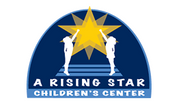Sun Safety for Young Children in a Daycare or Child Care Setting

Sun Safety
The weather is getting warmer and children now have more time to play outside. Warm sunny days are wonderful, but children can be especially vulnerable to ultraviolet radiation. With the opportunity to have increase time to be outdoors, we must also be aware of the importance sun safety. As more young children are cared for in child care programs, child care providers need to evaluate their sun-protection policies and procedures.
At A Rising Star Children’s Center, we make certain that children are protected from the sun while enjoying the outdoors. We know that children are at greater risk to sun exposure because the outer layer of skin is thinner and they have more skin relative to their body mass. Therefore, a sunburn will cover more area and be more harmful. Sunburns are more than uncomfortable; they are also a major risk factor for melanoma, the most aggressive form of skin cancer. The risk of skin cancer from sun exposure is significantly increased by time spent in the sun during childhood. Therefore, staff at A Rising Star Children’s Center work together with parents to practice sun safety.
Below are a few Sun Safety Guidelines:
- Avoid being in the sun between 10 a.m. and 4 p.m. This does not mean you have to keep children indoors. Arrange the play area so children can play in the shade. Keep babies under 6 months out of direct sunlight. Put them in a covered stroller, under an umbrella or in the shade. At A Rising Star Children’s Center, we have a fully shaded outdoor play yard so children can enjoy being outside and also be protected from the sun.
- Apply sunscreen that has an SPF (sun protection factor) of at least 15 or higher) To be effective, sunscreen must be applied to the skin 20 to 30 minutes before going outdoors and reapplied every two hours or after swimming or sweating. The sunscreen may be provided by the parents or by the child care program. Children should learn to make applying sunscreen a habit, like brushing their teeth. At A Rising Star Children’s Center we apply sunscreen early and often at the direction of the parent.
- Wear safe sunglasses. Babies and young children are more susceptible to irreversible solar eye damage. The eyes can be protected from ultraviolet rays by wearing lenses that absorb 100 percent of both UV-A and UV-B solar rays. we ensure that if a child brings in sunglasses, they are worn.
- Wear protective clothing - a wide-brimmed hat, a long-sleeved shirt and pants. A hat shields the face, ears, and back of the neck. A baseball hat does not provide adequate protection but is probably better than no hat at all.
- Beware of cloudy days. As much as 80 percent of the sun’s rays come through clouds so apply sunscreen on those days, too.
- Sand, snow, concrete and water can reflect up to 85 percent of the sun’s damaging rays. Take precautions near these surfaces. Our water play is fully shaded and we do not play on or near concrete at A Rising Star Children’s Center.
At A Rising Star Children’s Center, we take the care of young children very seriously. That is why we set a good example for children by not only applying protection on the children but also on ourselves frequently. A child’s sun exposure is dependent on the attitudes and practices of the primary caregiver. Parents and caregivers who frequently practice skin cancer prevention behaviors are more likely to practice prevention techniques with children. Children model what they see. We also have a secluded and completely shaded back yard for the children to play in that protects them from the harmful rays of the sun.
Click below to read: How Can I Protect My Children from the Sun? from the Centers for Disease Control and Prevention: http://www.cdc.gov/cancer/skin/basic_info/children.htm
For over 13 years, A Rising Star Children’s Center has been caring for infants, toddlers, preschool and school aged children. Keeping them happy and safe from harm. To learn more about our program and how we might help you please call 914-788-4582 or visit us online.
About the Business
(19 reviews)
Have a question? Ask the experts!
Send your question

